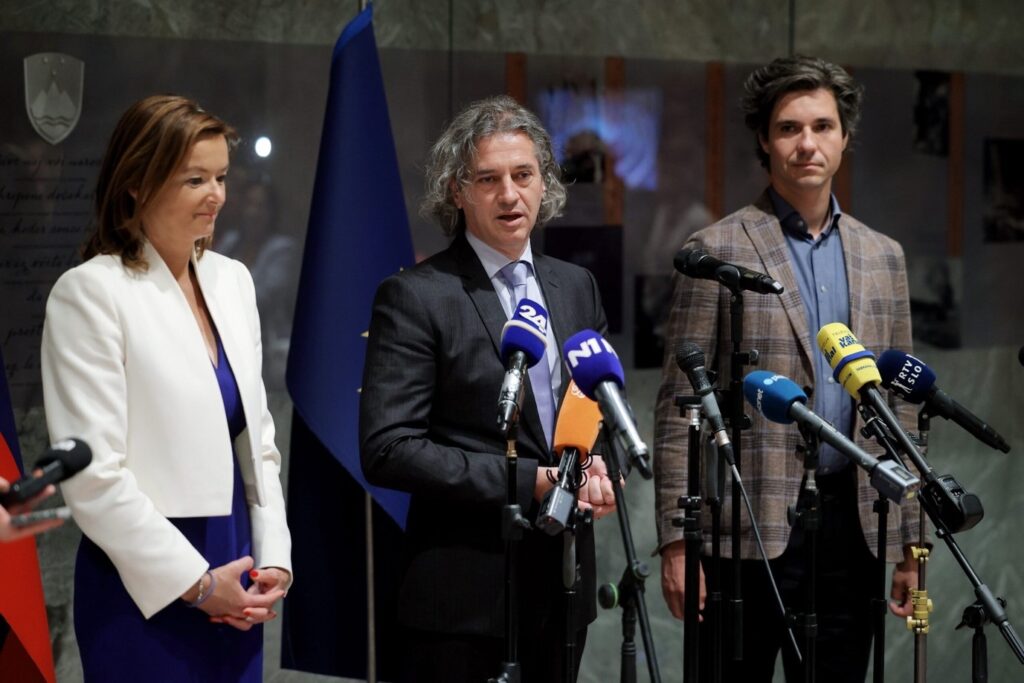During the term of the previous Janez Janša government, Slovenia was near the top of the most successful countries in terms of absorption of EU cohesion funds. It has become Slovenian folklore that absorption of cohesion funds deteriorates sharply when a left-wing government takes over from a right-wing one. And this time, it was no different, but things deteriorated so drastically under the Golob government that even the mainstream left-wing media wrote about it. The President of the National Council, Marko Lotrič, warned that the situation is only getting worse.
Under the government led by Robert Golob, the absorption of European Union funds has virtually stopped. In just a few months (from April to July 2022), Slovenia fell from 4th to 11th place among all EU Member States under his government. We have gone from being a prosperous country to being a country that has started to sink towards the bottom, and this is still going on. Slovenia is now in second to last place in the absorption of EU funds, and we have used less than 10% of the funds available to us under the Recovery and Resilience Plan (RRP).
Out of 2.7 billion, only 281 million have been disbursed?!
As the President of the National Council pointed out, there has also been a snag in the absorption of the Recovery and Resilience Plan funds, and he cited a few facts:
“Only 281 million euros out of the 2.7 billion euros available have been disbursed from the EU Budget to date. Of this, 231 million euros are advances received by Slovenia in September 2021 (which means that this government has only secured 50 million euros in overpayments). Only 6 percent of the set milestones and targets (reforms and investments) have been met. What is available to us needs to be spent better and spent efficiently. The money is needed in several areas,” Lotrič warned.
A gift from the Janša government that Golob was unable to accept
Slovenia’s Recovery and Resilience Plan – RRP – was prepared by the Janez Janša government while we were still deep in the pandemic, and endorsed by the European Commission. The investments totalling 2.7 billion euros, which the Janša government secured, must be implemented by Slovenia by the end of 2026.
“The implementation of the planned reforms will be a condition for the disbursement of the funds. There is not much time left anymore. Cooperation and compromise will therefore have to be the key guiding principles for all those involved in the process of drafting, coordinating and approving laws and strategic content,” said Zvone Černač, the then-Minister for Development, Strategic Projects and Cohesion, when the green light came from Brussels in 2021.
Two years later, under the Golob government, the drawing of funds has come to a complete standstill, and, as Lotrič clearly shows, the paralysis is still ongoing. So, what is happening?
Disinterested Golob and Jevšek on the chopping block?
Sources in the coalition have been whispering for some time that the coalition’s problem when it comes to the disbursement of funds is the Minister of Cohesion and Regional Development, Aleksander Jevšek, who has been accused by the opposition and some experts of ineffective management of the ministry and of disastrous results that were already accumulating before the floods – which have only further exposed the powerlessness of the Minister and his team. In this tense situation, an explosive argument between the Minister and the Prime Minister is said to have taken place at one of the October government meetings.
At one point, the argument escalated to the point where Minister Jevšek allegedly stood up and left the room. Our source says that he does not intend to return to this, at least for the time being. He is to be replaced by his party colleague, current State Secretary Marko Koprivc (the one who made a name for himself by claiming that the Social Democrats (Socialni demokrati – SD) are the proud successors of the Communists). Koprivc is to be the new point of contact between the ministry and the government, following the dispute between Jevšek and Golob.
At the time, the Minister appeared on the show Odmevi (Echoes), where he confronted the former Minister of Cohesion, Zvone Černač. The latter pointed out that “Slovenia is the penultimate country in terms of realising its Recovery and Resilience Plan. We have not spent even 5 percent of the funds so far, and yet this plan was approved on the 1st of July 2021. Nothing has been spent except 50 million euros, and the advance payment that was already made during our government, in autumn 2021, and that is the main problem.”
The disinterested Prime Minister is also partly to blame for the poor performance of the ministry and the poor absorption of EU funds. As former Cohesion Minister Zvone Černač recently revealed, the Cohesion Ministry was not one of the current Prime Minister’s priorities. “I have never heard that Mr Golob, as Prime Minister, ever dealt with this issue. However, the previous Prime Minister did. Operationally, at least once a month,” he said.
It is also important to stress that the control over the use of EU funds is much more thorough and rigorous than that of the Slovenian fiscus, where the “Balkan methods” of dividing public money among the friends of the coalition still reign supreme. Let us just remind you of the hundreds of millions of euros that the “street” of the Left party (Levica) received with almost no control over the use of funds (the shocking revelations concerning the Minister of Public Administration, Sanja Ajanović Hovnik, who was accused of rigging a public tender to benefit her former business partner, reveal exactly how money is distributed in Slovenia to “our own people”). Are worse opportunities for corruption also one of the factors behind the disinterest of our rulers in the absorption of cohesion funds?
I. K.


